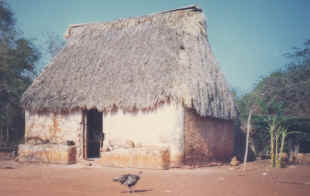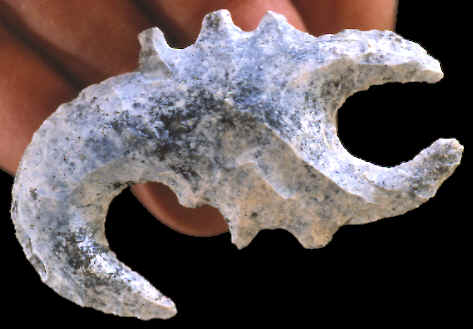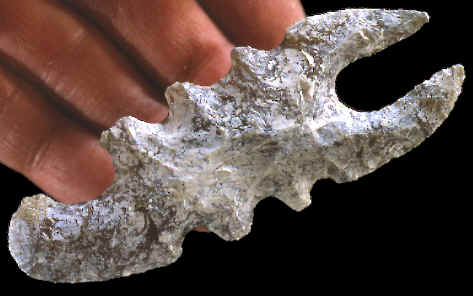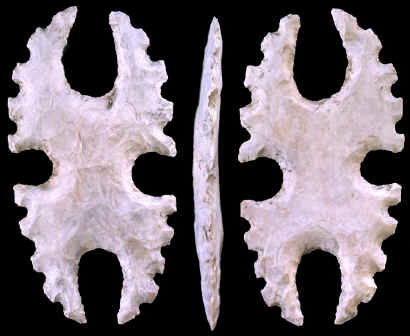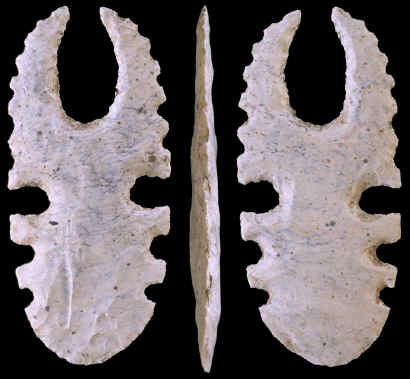|
|
|
During the excavation of the Maya site of Altar de Sacrificios in southwestern Peten, Guatemala in the 1960's a Peabody-Harvard project uncovered several eccentric flint caches. Most of the artifacts were bifacially flaked but a few were reported to be flaked on one side only (unifacial). They also reported no evidence of use-wear on the edges and they were made of finer quality chert or flint. |
|
|
|
|
There were a total of 270 eccentric flints found on the site of Altar de Sacrificios during the 1960's excavations. They include designs of circles, crescents, s-shaped figures, crosses and various life forms. |
|
|
|
|
A typical eccentric flint cache from the Altar de Sacrificios site may have 9 eccentrics. For example, number 5 cache was found under an altar. The 9 eccentrics found there include 4 notched & serrated blades, a jaguar or dog, scorpion, double crescent, multi-notched & serrated blade and a double-pointed biface. An obsidian bladelet was also found in this cache. |
|
|
Another cache from the Altar de Sacrificios site also includes 9 eccentrics and was found near an altar. This cache contained 2 axe-like forms, 2 scorpions, a crescent, ring, an s-form, a notched double-pointed blade and a centipede. There were also 677 obsidian core blades, cores and flakes found with this cache. |
|
|
Another slightly larger cache of eccentrics found at Altar de Sacrificios, Guatemala contained 13 eccentrics. This cache was thought to have been placed through a plaza floor at the time of the placement of Altar number 4. This one contained 4 laurel-leaf blades, 3 notched double-pointed blades, 2 elaborated perforated forms, a very complex unnamed form, 2 trident crescents and a double-notched pointed blade. |
|
| CONTINUE ON TO PAGE FIVE | |
|
"REFERENCES"
1946,
"The Ancient Maya," by Sylvanus G. Morley, page 436. |
|
